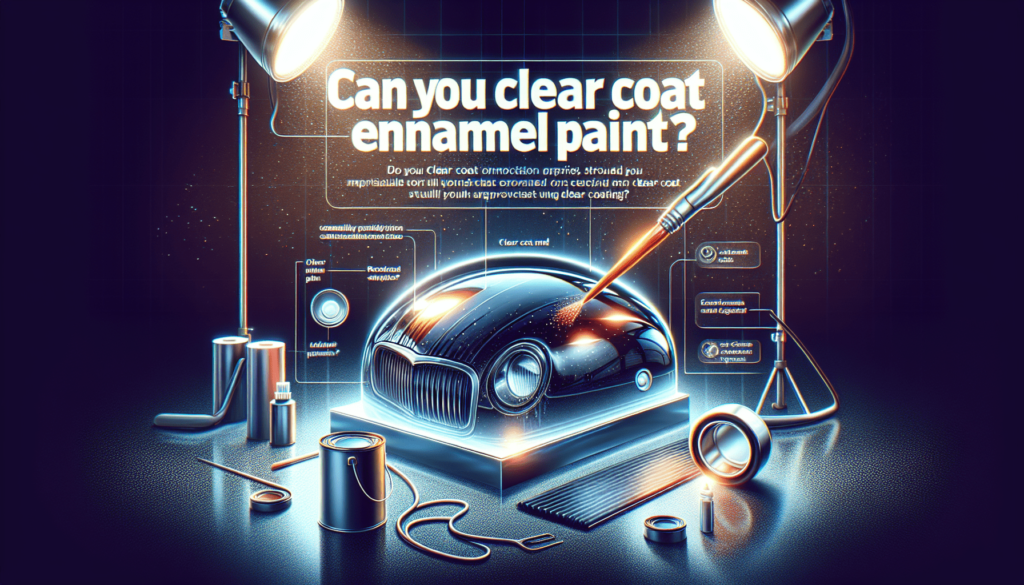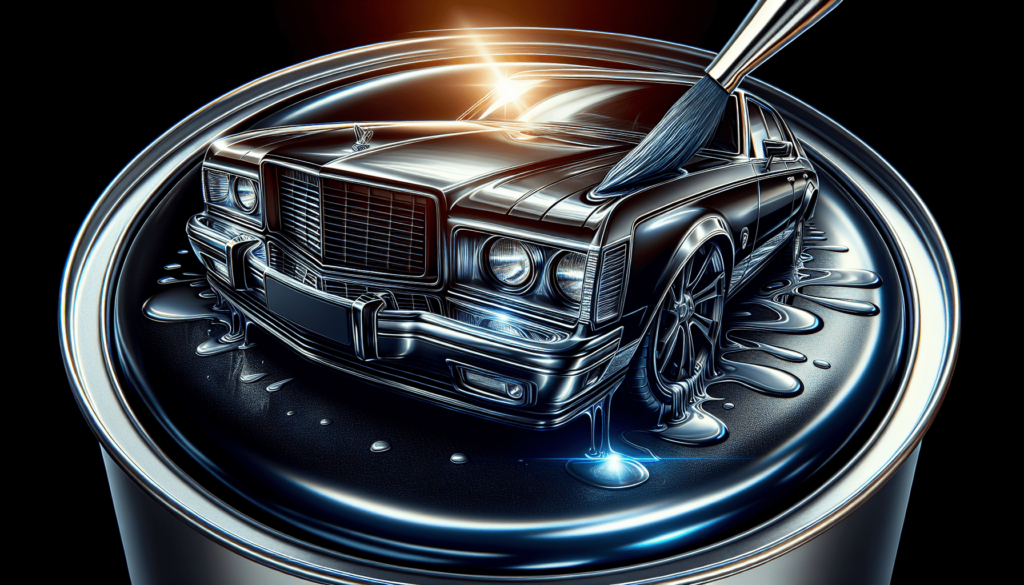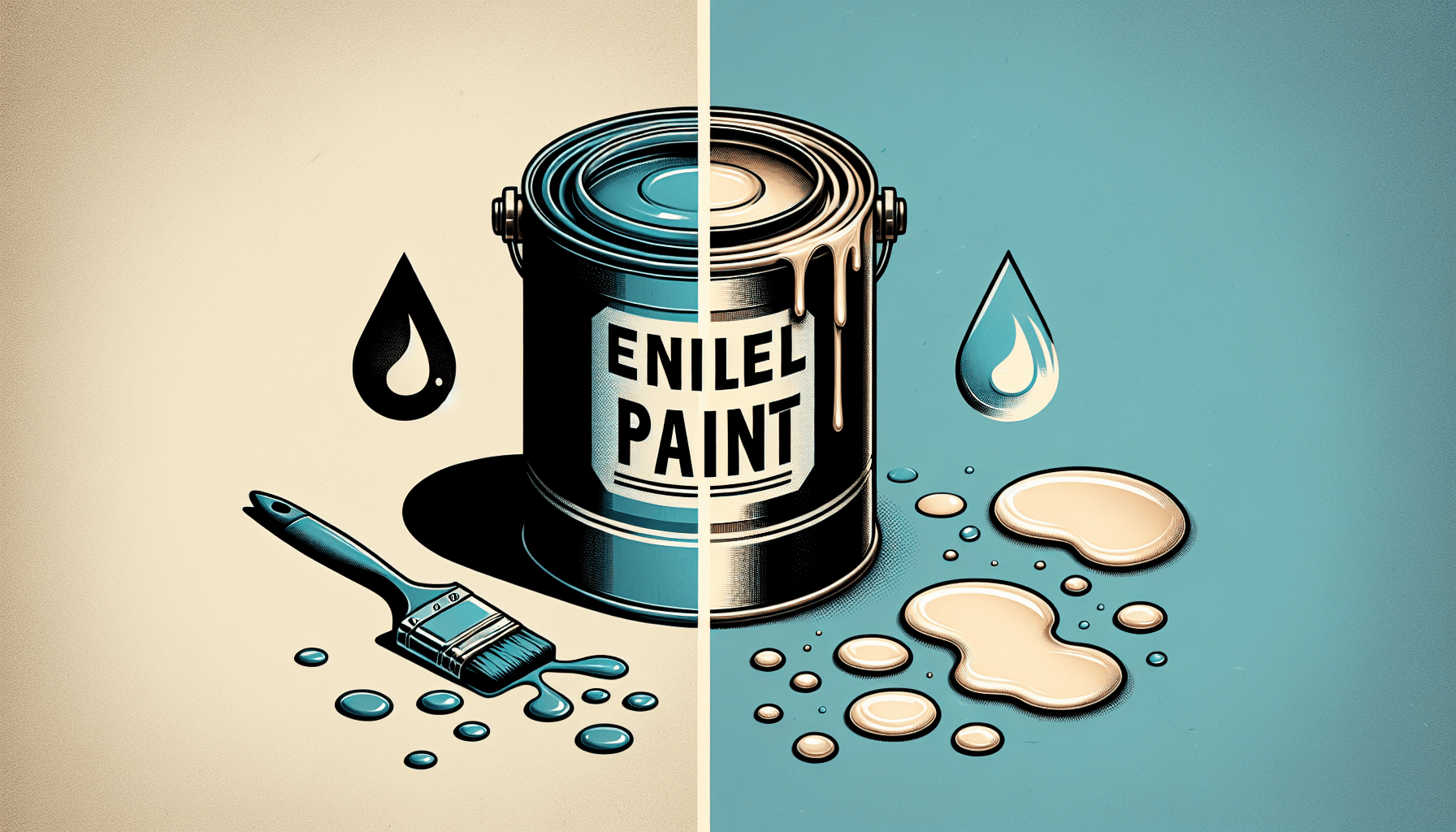Clear coating enamel paint is a common practice in the automotive industry, as it adds an extra layer of protection and enhances the paint’s glossy finish. However, many people are unsure whether clear coating is suitable for enamel paint. In this article, we will address this question and provide you with valuable insights on the compatibility and benefits of clear coating enamel paint. Understanding this process will help you make an informed decision when it comes to preserving and enhancing the longevity and aesthetics of your enamel-painted surfaces.
What is enamel paint?
Enamel paint is a type of paint that provides a hard, glossy, and durable finish. It is known for its smooth and lustrous appearance, suitable for a wide range of applications. Enamel paint is commonly used on surfaces such as metals, wood, ceramics, and plastics. It is highly versatile and provides excellent coverage and durability, making it a popular choice for both interior and exterior projects.
Definition of enamel paint
Enamel paint refers to a type of paint that contains a high proportion of enamel resin, which is responsible for its glossy and durable finish. The term “enamel” can be misleading, as not all enamel paints contain enamel resin. However, enamel paint generally refers to paints that dry to a hard and glossy finish, regardless of the specific resin content.
Composition of enamel paint
Enamel paint is typically composed of several components, including pigments, solvents, binders, and additives. The pigments give the paint color, while solvents help to dissolve the binders and allow for easy application. Binders, commonly made of resins such as enamel resin, provide the film-forming properties of the paint. Additives may be included to enhance various characteristics of the paint, such as drying time, adhesion, or resistance to ultraviolet (UV) radiation.
Properties of enamel paint
Enamel paint offers a range of desirable properties that make it a preferred choice for many applications. Some key properties of enamel paint include:
-
Glossy finish: Enamel paint dries to a smooth, shiny surface, providing an attractive appearance.
-
Durability: The tough and hard nature of enamel paint makes it resistant to scratches, stains, and wear, ensuring a long-lasting finish.
-
Excellent coverage: Enamel paint typically provides excellent coverage, often requiring fewer coats compared to other types of paint.
-
Resistance to moisture and chemicals: Enamel paint exhibits good resistance to moisture, making it suitable for humid environments and areas prone to water exposure. It is also resistant to many chemicals, making it suitable for high-traffic areas.
-
Versatility: Enamel paint can be used on various surfaces, including metal, wood, ceramics, and plastics, making it a versatile option for different projects.
What is clear coat?
Clear coat, also known as a topcoat or clear varnish, is a transparent protective coating applied over a painted surface. It serves as a protective layer to enhance the appearance and durability of the underlying paint. Clear coats are typically formulated with various resins and additives that provide superior protection against UV radiation, chemicals, and physical abrasions.
Definition of clear coat
Clear coat is a transparent coating that is applied over a painted surface to provide additional protection and enhance the gloss or sheen of the paint. It is commonly used in automotive finishing, as well as on furniture, metal objects, and other surfaces that require a high level of protection and aesthetic appeal. Clear coats can be found in various formulations, including solvent-based and water-based options.
Types of clear coat
There are different types of clear coat finishes available, each with its own characteristics and suitability for specific applications:
-
High Gloss: This type of clear coat provides a glossy and reflective finish, giving a sleek and polished appearance to the painted surface.
-
Satin: Satin clear coat offers a satin or semi-gloss finish, providing a subtle sheen without excessive shine. It offers a more subdued appearance compared to high gloss clear coats.
-
Matte: Matte clear coat creates a non-reflective and flat finish, giving a velvety effect to the painted surface. It is often used for achieving a contemporary or industrial look.
-
UV-Resistant: Clear coats with UV-resistant properties offer superior protection against the harmful effects of UV radiation, preventing the paint from fading or deteriorating over time.
-
Quick-Drying: Some clear coats are formulated to dry quickly, allowing for faster project completion. It is particularly useful in situations where time is a constraint.

Can enamel paint be clear coated?
Yes, enamel paint can be clear coated to enhance its appearance and durability. Clear coating enamel paint is a common practice, especially in automotive refinishing, as it adds an extra layer of protection and gloss to the paint job. However, before applying a clear coat over enamel paint, it is essential to consider several factors.
Reasons to clear coat enamel paint
There are several reasons why one might choose to clear coat enamel paint:
-
Enhanced Gloss: Clear coating adds depth and shine to the enamel paint, creating a more attractive and professional-looking finish.
-
Protection: The clear coat acts as a barrier, protecting the enamel paint from environmental factors such as UV radiation, chemicals, and physical abrasions, extending its lifespan.
-
Improved Durability: Clear coating provides an additional layer of protection, making the enamel paint more resistant to chips, scratches, and other forms of damage.
Benefits of clear coating enamel paint
Clear coating enamel paint offers numerous benefits:
-
Gloss Enhancement: The clear coat intensifies the glossy appearance of enamel paint, giving it a more vibrant and polished look.
-
Protection from UV Radiation: Clear coats with UV-resistant properties shield the enamel paint from the damaging effects of the sun’s ultraviolet rays, preventing premature fading or discoloration.
-
Enhanced Durability: The added layer of clear coat increases the paint’s resistance to scratches, chips, and other physical damages, extending the lifespan of the enamel paint job.
-
Ease of Cleaning: Clear coated enamel paint is typically easier to clean and maintain, as the smooth surface facilitates the removal of dirt, grease, and stains.
-
Professional Finish: Clear coating gives enamel paint a professional and high-quality finish, making it suitable for applications that require an aesthetically pleasing appearance.
Disadvantages of clear coating enamel paint
While there are benefits to clear coating enamel paint, it is important to consider potential downsides:
-
Increased Cost: Clear coating adds an additional layer and requires specific products, leading to increased material and labor costs.
-
Time-Consuming: Applying clear coat requires careful preparation, application, and drying time, which can prolong the overall project timeline.
-
Maintenance: Clear coated enamel paint may require regular maintenance, such as buffing or polishing, to maintain its gloss and appearance over time.
-
Possible Incompatibility: Clear coats may not be suitable for all types of enamel paint, and compatibility issues may arise if the products are not specifically formulated for each other.
Preparation before clear coating
To ensure a successful clear coat application over enamel paint, proper preparation is crucial. The following steps should be taken before clear coating:
Cleaning the painted surface
Before applying the clear coat, it is important to thoroughly clean the painted surface to remove any dirt, grease, or contaminants. Use a mild detergent or specialized surface cleaner and a lint-free cloth to achieve a clean and debris-free surface. Ensure the surface is completely dry before proceeding.
Sanding the enamel paint
To create a better bonding surface for the clear coat, lightly sand the enamel paint with fine-grit sandpaper. This process helps to smooth out any imperfections, enhance adhesion, and promote an even application of the clear coat. After sanding, wipe away any dust or residue using a clean cloth.
Applying primer
In some cases, applying a primer before clear coating may be recommended. Primers help to promote adhesion, improve coverage, and provide a consistent base for the clear coat. Follow manufacturer instructions to select an appropriate primer and apply it evenly over the enamel paint. Allow the primer to dry completely before proceeding with the clear coat application.

Steps to clear coat enamel paint
Once the preparation steps are complete, clear coating enamel paint can be done following these steps:
Selecting the clear coat
Choose a clear coat product that is compatible with enamel paint and suited to the desired finish. Consider factors such as the desired level of gloss, drying time, and UV-resistance. Read and follow the manufacturer’s instructions and recommendations for application.
Using appropriate equipment
Prepare the necessary equipment for clear coat application, such as an HVLP (High Volume Low Pressure) spray gun, paintbrush, or roller, depending on the size and nature of the project. Ensure that the equipment is clean and in good working condition to achieve a smooth and even application.
Applying clear coat in thin layers
Start by applying a thin and even coat of clear coat over the enamel paint. Avoid heavy or excessive application, which may lead to runs, sagging, or uneven drying. Allow each coat to dry according to the recommended time specified by the manufacturer before applying subsequent coats. It is generally advisable to apply two or three thin coats rather than a single thick coat.
Allowing drying and curing time
After the final coat of clear coat is applied, allow sufficient drying and curing time for the clear coat to fully harden. Follow the manufacturer’s instructions regarding the recommended drying and curing times, as these may vary depending on the specific clear coat product and environmental conditions.
Tips for clear coating enamel paint
To achieve the best results when clear coating enamel paint, consider the following tips:
Choosing the right weather conditions
Select a time to apply the clear coat when the weather conditions are suitable. Ideally, choose a day with low humidity, moderate temperature, and minimal wind. Extreme temperatures or high humidity levels can affect the drying and curing process of the clear coat, leading to potential issues.
Avoiding over-application of clear coat
Apply clear coat in thin and even layers to prevent drips, runs, or sagging. Over-application can result in uneven drying, reduced gloss, and prolonged drying time. It is better to apply multiple thin coats rather than one thick coat.
Buffing and polishing the clear coat
After the clear coat has fully cured, consider buffing and polishing the surface to enhance the gloss and remove any minor imperfections. Use a gentle polishing compound and a clean, soft cloth to achieve a smooth and shiny finish. This step can further enhance the clarity and aesthetic appeal of the clear coated enamel paint.
Regular maintenance and care
To prolong the lifespan and appearance of the clear coated enamel paint, regular maintenance is essential. Avoid using abrasive cleaners or harsh chemicals that may damage the clear coat. Instead, use a mild soap and water solution along with a soft cloth or sponge to clean the surface. Regularly inspect the clear coat for any signs of damage, such as peeling or flaking, and address them promptly to prevent further deterioration.
Common issues with clear coated enamel paint
Despite proper application and maintenance, certain issues may arise with clear coated enamel paint. Some common problems include:
Peeling or flaking of clear coat
Improper surface preparation or inadequate adhesion can lead to clear coat peeling or flaking over time. Incompatibility between the clear coat and enamel paint can also cause these issues. To address this problem, the affected area may need to be sanded, primed, and recoated with the clear coat.
Yellowing or discoloration
Exposure to UV radiation, excessive heat, or certain chemicals can cause the clear coat to yellow or become discolored over time. To prevent this, it is important to use a clear coat with UV-resistant properties and protect the clear coated surface from prolonged sun exposure, extreme temperatures, and harsh chemicals.
Dust or debris in the clear coat
Particles of dust or debris may become trapped in the clear coat during application, resulting in an uneven or gritty finish. To minimize this issue, ensure the work area is clean and free of contaminants before applying the clear coat. If dust or debris does become embedded, lightly sanding and recoating may be necessary.
Uneven or patchy finish
Uneven application of the clear coat can result in an uneven or patchy appearance. This may be caused by improper spraying technique, inadequate drying time between coats, or using incompatible products. To rectify this issue, lightly sand the affected areas and apply additional coats of clear coat following proper application techniques.
Removing clear coat from enamel paint
In certain situations, the need may arise to remove the clear coat from enamel paint. This can be due to damage, discoloration, or the desire to change the finish. The following methods can be employed for clear coat removal:
Methods for removing clear coat
-
Chemical Stripper: Using a chemical stripper specifically designed for removing clear coat, apply the product to the painted surface and allow it to soften the clear coat. After the recommended time, gently scrape off the softened clear coat using a scraper or plastic card. Follow all safety precautions outlined by the manufacturer, including proper ventilation and personal protective equipment (PPE).
-
Sanding: If the clear coat layer is thin, it can be removed by sanding. Use fine-grit sandpaper and sand the clear coat gently until it is completely removed. Take care not to sand too aggressively, as this can damage the underlying enamel paint.
Precautions during removal process
Regardless of the method chosen for clear coat removal, it is important to take precautions:
-
Work in a well-ventilated area or outdoors to minimize exposure to fumes when using chemical strippers.
-
Wear suitable protective equipment, including gloves, safety goggles, and a respirator mask, to protect against any potential hazards.
-
Follow the manufacturer’s instructions and recommendations for the specific clear coat removal method and products being used to ensure safety and best results.
Alternative options to clear coating enamel paint
If clear coating is not desired or feasible, there are alternative options available to enhance and protect enamel paint:
Using gloss or satin finish enamel paint
Instead of clear coating, using a gloss or satin finish enamel paint can provide a similar level of protection and aesthetic appeal. Gloss and satin finishes offer varying levels of glossiness, providing a polished and durable surface without the need for an additional clear coat. Choose an enamel paint with good adhesion and durability properties for optimal results.
Applying protective wax or sealant
To protect enamel paint without the use of a clear coat, consider applying a protective wax or sealant. These products create a layer that shields the paint from UV radiation, moisture, and other potential damages. Regularly maintain and reapply the wax or sealant as needed to ensure continued protection.
Conclusion
Clear coating enamel paint can significantly enhance its appearance and durability. By applying a clear coat over enamel paint, you can achieve a glossy and professional finish while providing extra protection against UV radiation, chemicals, and physical damage. Proper preparation, careful application, and regular maintenance are key to ensuring a successful result. However, it is important to consider the potential disadvantages and alternative options when deciding whether to clear coat enamel paint. By weighing the benefits and drawbacks, individuals can make an informed decision based on their specific needs and preferences.



